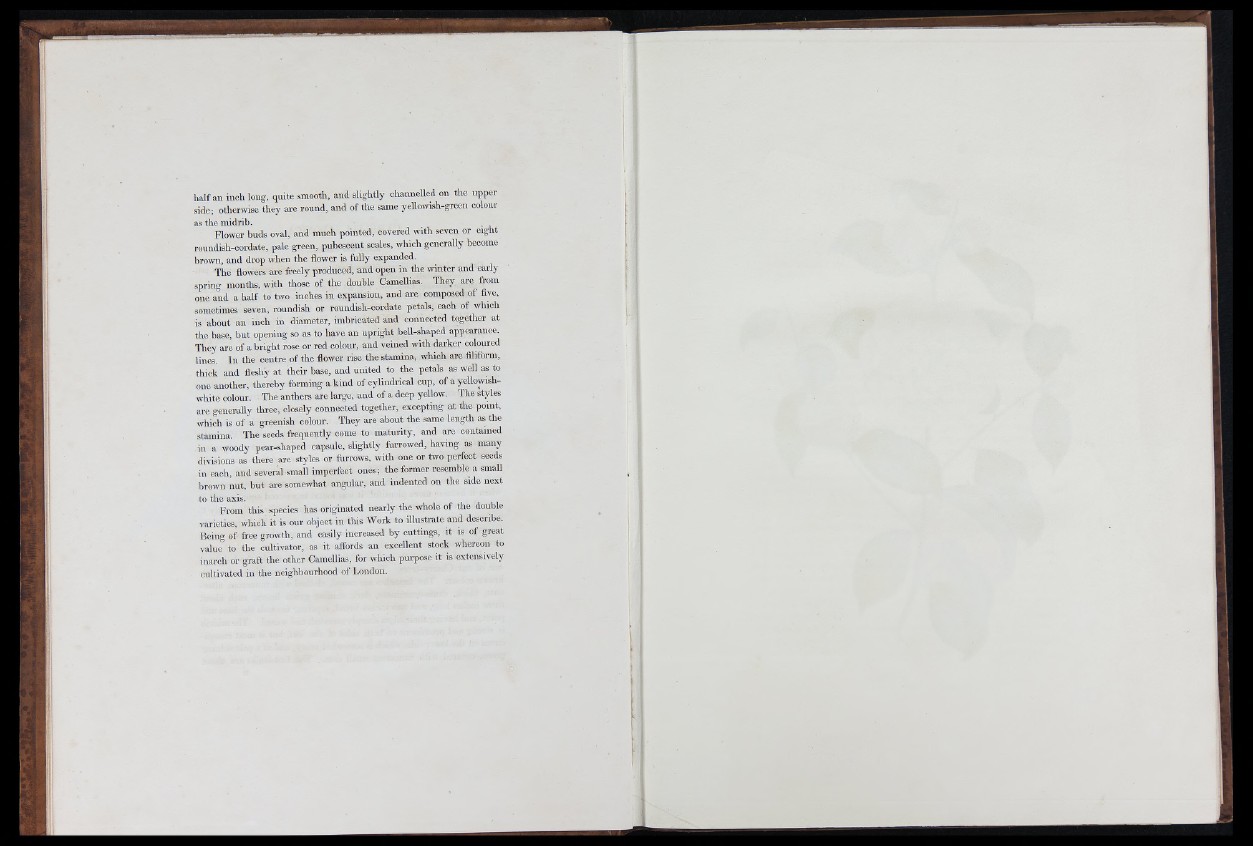
k a lfa n inch long, quite smooth, and slightly channelled on the upper
side; otherwise they are round, and of the same yellowish-green colour
as the midrib.
Flower buds oval, and much pointed, covered with seven or eight
roundish-cordate, pale green, pubescent scales, which generally become
brown, and drop when th e flower is ftilly expanded.
The flowers are freely produced, and open in th e winter and early
spring montlis, with those of th e double Camellias. They are from
one and a half to two inches in expansion, and ai-e composed of flve,
sometimes seven, roundish or roundish-cordate petals, each of which
is about an inch in diameter, imbricated and connected together at
the base, b u t opening so as to have an u pright bell-shaped appearance.
They are of a b rig h t rose or red colour, and veined with dai-ker coloured
lines. In the centre of the flower rise th e stamina, which are flliform,
thick and fleshy a t the ir base, and united to th e petals as well as to
one another, thereby forming a k in d of cylindrical cup, of a yellowish-
white colour. The anthers are large, and of a deep yellow. The styles
are generally three, closely connected together, excepting a t the point,
which is of a greenish colour. They are about th e same length as the
stamina. The seeds frequently come to ma tu rity , and are contained
ill a woody pear-shaped capsule, slightly furrowed, having as many
divisions as there are styles or furrows, with one or two perfect seeds
111 each, and several small imperfect ones; the former resemble a small
brown nut, h u t are somewhat angular, and indented on th e side next
to the axis.
From this species has originated nearly th e whole of th e double
varieties, which it is our object in this Wo rk to illustrate and describe.
Being of free growth, and easily increased b y cuttings, it is of great
value to the cultivator, as it affords an excellent stock whereon to
inarch or graft th e other Camellias, for which purpose it is extensively
cultivated in the neighbourhood of London.
r.'i